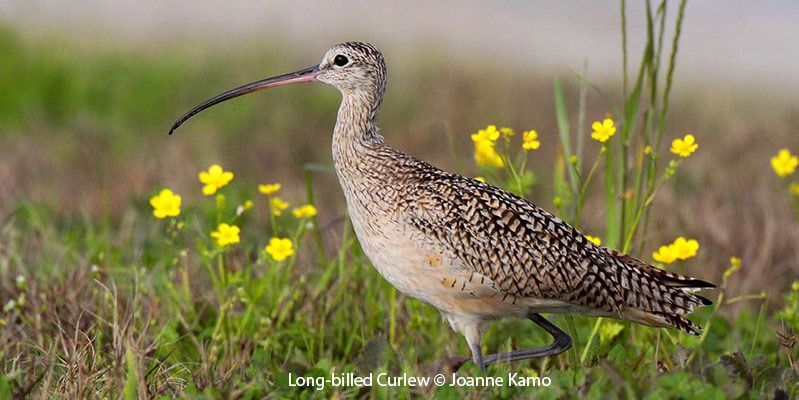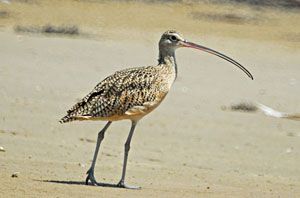
© Joseph Kennedy
Long-billed Curlew
Numenius americanus
Family: (Scolopacidae) Sandpipers and Phalaropes
Preferred Habitat: Prairies and fields
Seasonal Occurrence: Common fall through spring; occasional in summer.
Profile by Gislaine Peters: The Long-billed Curlew is the largest shorebird in North America. This speckled brown and buff colored bird’s most noticeable feature is it’s extremely long down-curved bill. Their bills can reach 8 inches or more and are dark in color and fade to flesh tones at the base. Their underwings are cinnamon in color and their legs and feet are bluish-gray.
The Long-billed Curlew spends the non-breeding months along the coast, but in summer they are found in the Great Plains and Great Basin in areas with sparse, short grasses, such as mixed-grass prairies and agricultural fields. Here they feed on mainly insects such as beetles, grasshoppers, and caterpillars. They will also eat spiders, toads, and berries.
On the breeding grounds, the Long-billed Curlew males will do an undulating flight display over his territory while giving a loud ringing call. Once he has a mate they will construct a nest in a shallow scrape in the ground. The pair will create a lining for the nest of about 8 inches across and 3 inches deep with pebbles, bark, animal droppings, grass, stems, twigs, and seeds. Their clutch averages 4 eggs and both adults will incubate until they hatch, approximately 27-30 days. The downy young leave the nest soon after hatching and can feed themselves. Both parents will guard the young as they forage in marshy or damp areas.
Long-billed Curlews migrate to the coast in winter and can be found in the southern United States as well as northern Mexico. During winter, they can be found in coastal prairies, wetlands, tidal estuaries, mudflats, flooded fields, and occasionally beaches. While in these coastal areas the Long-billed Curlew will also eat crabs, crayfish, mollusks, marine worms, and ghost shrimps. Long-Billed Curlew are seen along the coast of Texas as they either pass through or arrive for winter. If you visit the Bolivar Flats Shorebird Sanctuary there is a good chance you’ll find one foraging among the thousands of other shorebirds currently staging or wintering there!
Profile by Nick Minnich: There’s a lot of information one can gather about a bird’s life simply by studying their physical characteristics; nonetheless, a bird’s bill often provides valuable insight into the species’ foraging and food preference. Raptors typically display a ripping/tearing bill, finches are equipped with a perfect tool for seed consumption, and seabirds are often able to carry marine prey long distances with their specially designed bills. Each species of shorebirds that show up on the vast Texas coastline have a bill that enables them to perform the vital function of food consumption within their ecological niche. As the name suggests, Long-billed Curlews possess an oversized, decurved bill which is ideal for consuming deep-burrowing prey like shrimps and crabs as well as a variety of other food items.
Long-billed Curlews are the common large curlew of North America, breeding in the grasslands across western North America, and wintering from central California along the coast to Guatemala. Long-billed Curlews are year-round residents in and around High Island and are often observed at the Bolivar Flats Shorebird Sanctuary. In addition to their remarkable bill, they are identified by their rich, cinnamon buff which the Paleartic curlews (Eurasian & Far Eastern) do not possess. Additionally, during breeding the birds are quite noisy, sharing their loud ‘cur-lee’, sharp ‘kee-he-he-he’, and ‘pill-will’ with neighboring birds and onlookers.
Like other shorebirds, Long-billed Curlews are known to feign injury in order to lead predators away from their eggs or chicks. The birds are often monogamous, breeding with the same mate year after year. The male displays with an undulating flight coupled with its loud, rising calls. Female birds are often larger than the males and have a noticeably longer bill. For both sexes, the bill’s end is controlled by separate muscles, acting much like a finger or tweezers. Because the bill has a lot of strengthening structures to prevent it from breaking, the birds are restricted from putting their tongue down the full length of their bill to grab prey and aid in swallowing. Instead, curlews often throw up their prey in the air before fully consuming it.
Formerly facing a hunting threat, the most prominent threat to the Long-billed Curlew is habitat loss. This species relies on open grassland areas in order to breed; therefore, habitat conversion for agricultural fields and housing developments heavily impact these important areas. Additionally, invasive vegetation as well as pesticide use both pose major threats as important food sources during the breeding season like grasshoppers and other native insects diminish.
If you’re wanting to observe this incredi-bill bird, I would highly recommend a visit to our Bolivar Flats Shorebird Sanctuary where you can see Long-billed Curlews in action with some other wickedly cool shorebirds and waders.
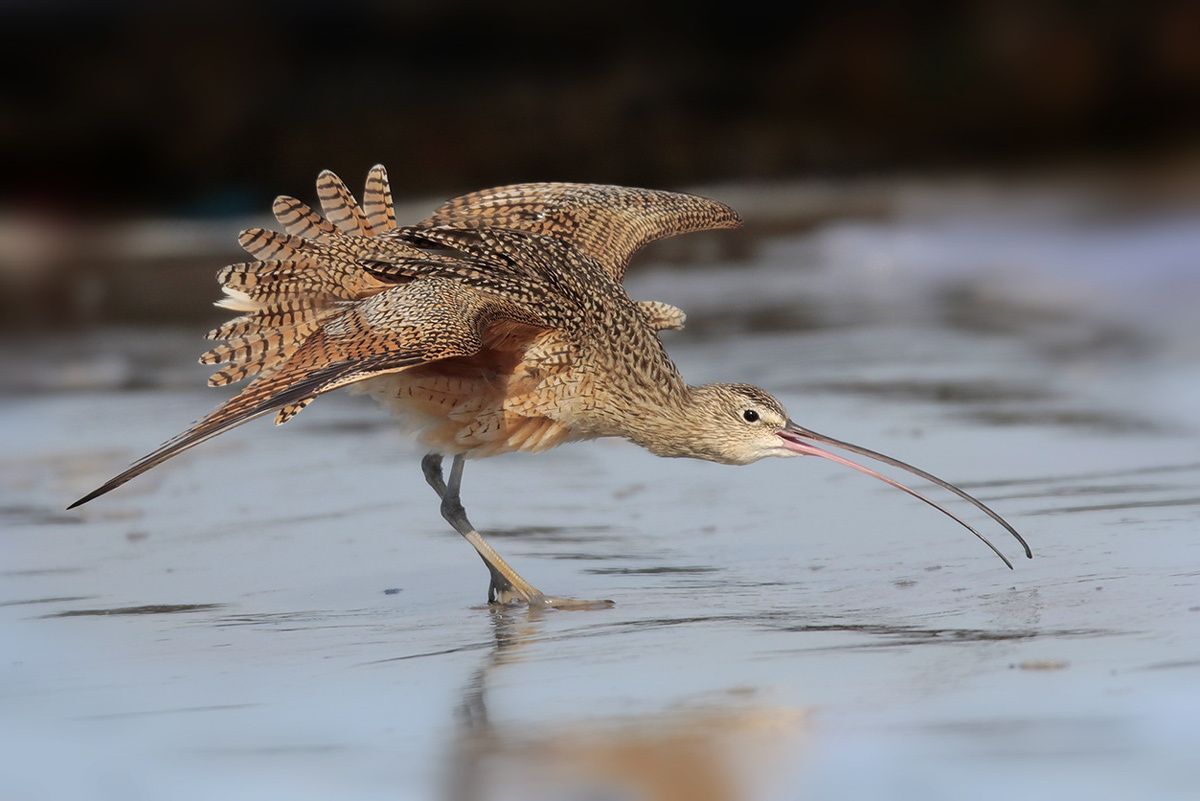
© Greg Lavaty, www.texastargetbirds.com
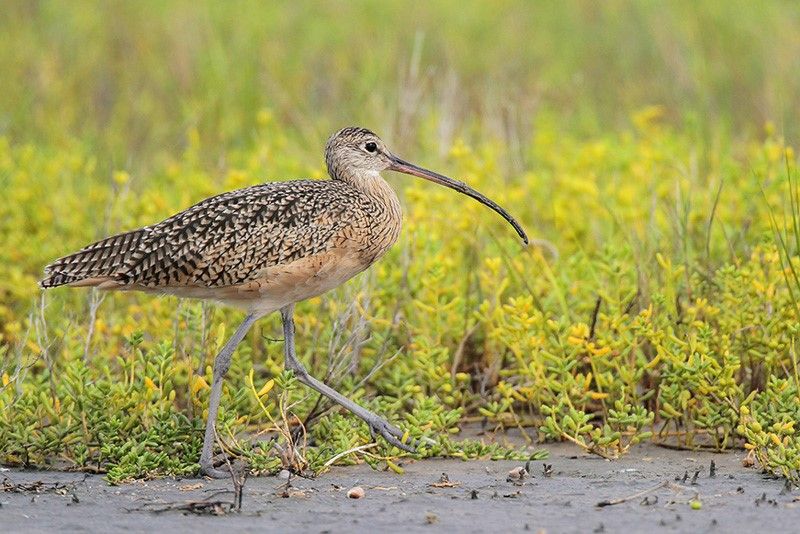
© Greg Lavaty, www.texastargetbirds.com
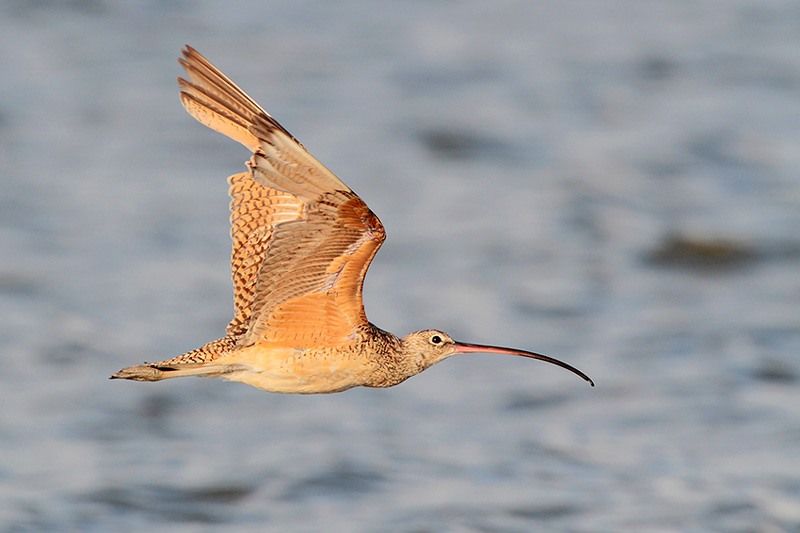
© Greg Lavaty, www.texastargetbirds.com
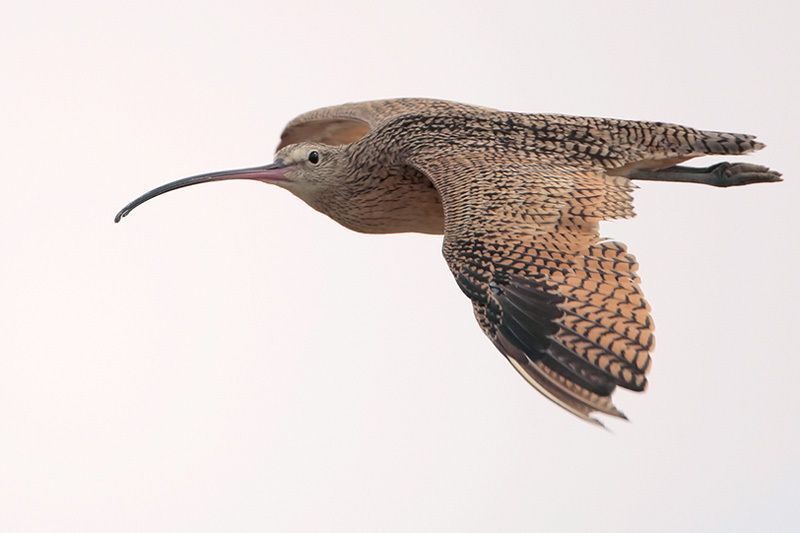
© Greg Lavaty, www.texastargetbirds.com
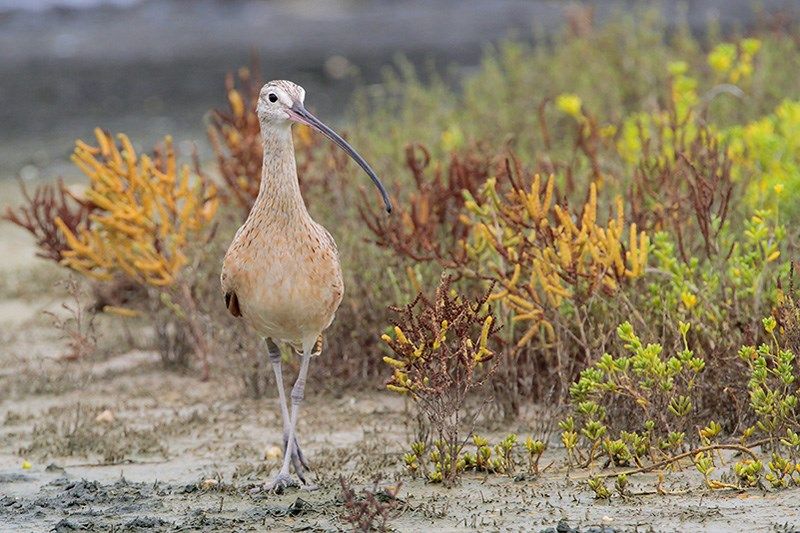
© Greg Lavaty, www.texastargetbirds.com

